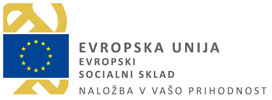Magister umetnosti giba/magistrica umetnosti giba
Selected qualifications
| Name of qualification | Name of qualification: Magister umetnosti giba/magistrica umetnosti gibaAdd to comparison |
|---|---|
| Translated title (no legal status) | Translated title: Master of Arts in movement |
| Type of qualification | Type of qualification: Master’s degree |
| Category of qualification | Category of qualification: Educational Qualification |
| Type of education | Type of education: Master's education |
| Duration |
Duration of education:
2 years
|
| Credits | Credits: 120 credits |
| Admission requirements |
Entry conditions:
In addition to the requested conditions from the first and second indents, candidates must also pass an entrance examination in the form of an interview (the overall grade consists of: 90% – performance in the aptitude test and test of mental and physical fitness, 10% – average grade in the first cycle).
|
| ISCED field |
Field:
Arts and humanities
|
| ISCED subfield | subfield: music and performing arts |
| Qualification level |
SQF Level:
SQF 8 |
- demonstrate technical and artistic knowledge in the field of the art of movement and independently search for new sources of knowledge in the technical and artistic field,
- monitor current events in the media critically and in depth; demonstrate knowledge of new developments in the science of movement, choreography, visual arts, video, etc.
- analyse, prepare and realise a staging (artistic and non-artistic),
- correct deficiencies in own performances, recognise specific elements of own creative process,
- perceive and innovatively resolve complex problems and conflict situations within a working collective (artistic or professional) and make decisions on them competently and with authority,
- competently receive the opinions of others and respond to them in an authoritative and reasoned way,
- take into account movement-related or otherwise justified rules of staging when designing performance-based and theoretical projects,
- advise on movement and choreography,
- win, conceive and lead projects in artistic and other problem areas,
- recognise the specificities of Slovene cultural identity, particularly from the point of view of theatrical performances,
- demonstrate own knowledge and talent as a work placement in institutions which use movement as a means of expression (theatre, television, film, opera, ballet, puppetry), and also in teaching an art of movement class,
- develop management and leadership skills and develop high-quality and effective interpersonal relations inside and outside the artistic sphere,
- develop intercultural communication in formal and non-formal situations,
Students may progress to the next year if by the end of the academic year they have completed all course units prescribed by the study programme for progression to the next year.
Third-cycle doctoral study programmes (SQF level 10)
To complete their studies, students must complete all course units prescribed by the study programme and subject syllabuses, for a total of 120 credits.
University of Ljubljana, Academy of Theatre, Radio, Film and Television
URL
Awarding body URL:Upcoming event
International Conference: 10 years of Slovenian Qualifications Framework
International Conference: 10 years of Slovenian Qualifications Framework Brdo Congress Centre, Predoslje 39, 4000...
© Center RS za poklicno izobraževanje, 2018. All rights reserved
Sitemap General legal notice Cookie Policy Production: ENKI






